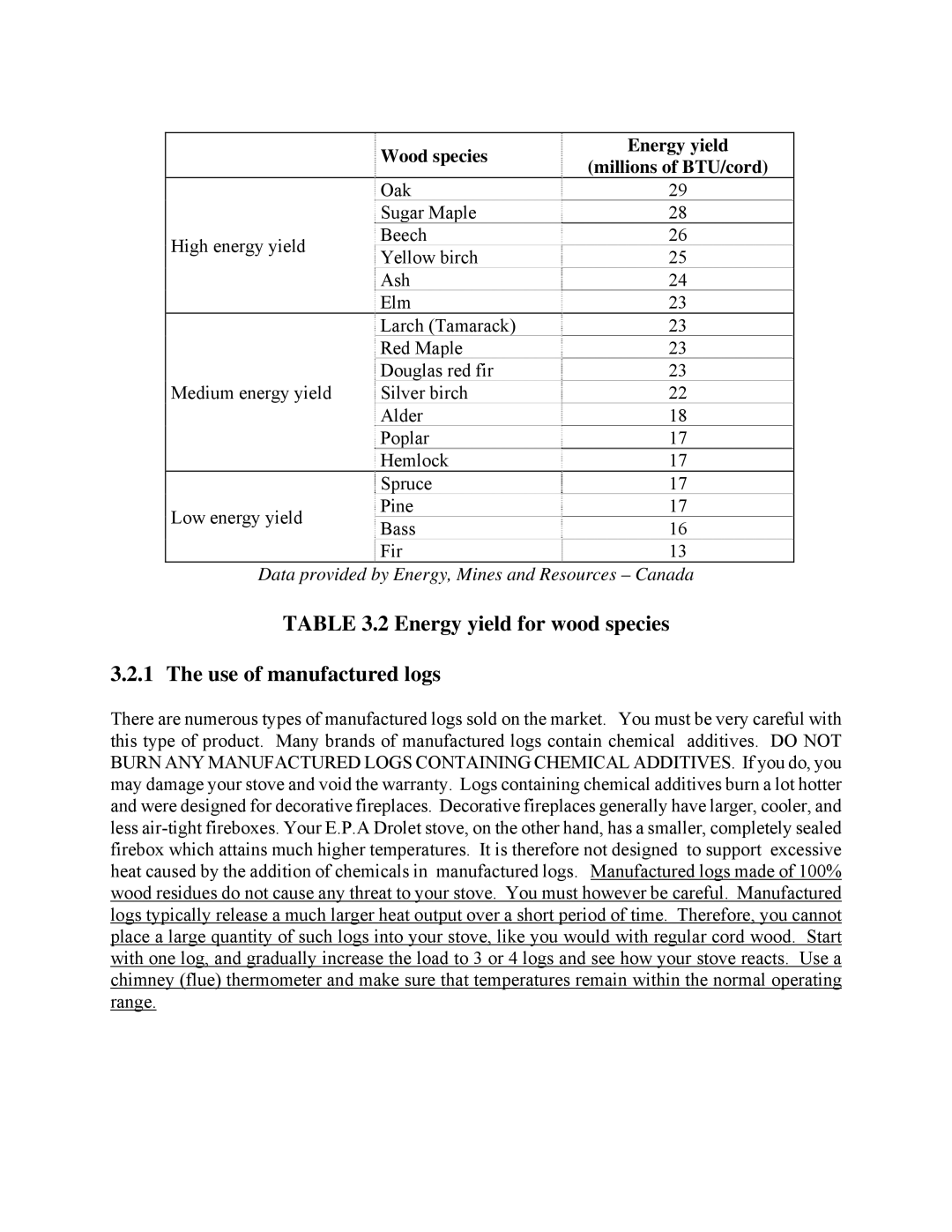
|
| Wood species |
| Energy yield |
|
|
| (millions of BTU/cord) | |
|
|
|
| |
|
| Oak |
| 29 |
|
| Sugar Maple | 28 | |
High energy yield |
| Beech | 26 | |
| Yellow birch | 25 | ||
|
| |||
|
| Ash | 24 | |
|
| Elm | 23 | |
|
| Larch (Tamarack) |
| 23 |
|
| Red Maple | 23 | |
|
| Douglas red fir | 23 | |
Medium energy yield |
| Silver birch | 22 | |
|
| Alder | 18 | |
|
| Poplar | 17 | |
|
| Hemlock | 17 | |
|
| Spruce |
| 17 |
Low energy yield |
| Pine | 17 | |
| Bass | 16 | ||
|
| |||
|
| Fir | 13 | |
Data provided by Energy, Mines and Resources – Canada
TABLE 3.2 Energy yield for wood species
3.2.1 The use of manufactured logs
There are numerous types of manufactured logs sold on the market. You must be very careful with this type of product. Many brands of manufactured logs contain chemical additives. DO NOT BURN ANY MANUFACTURED LOGS CONTAINING CHEMICAL ADDITIVES. If you do, you may damage your stove and void the warranty. Logs containing chemical additives burn a lot hotter and were designed for decorative fireplaces. Decorative fireplaces generally have larger, cooler, and less
